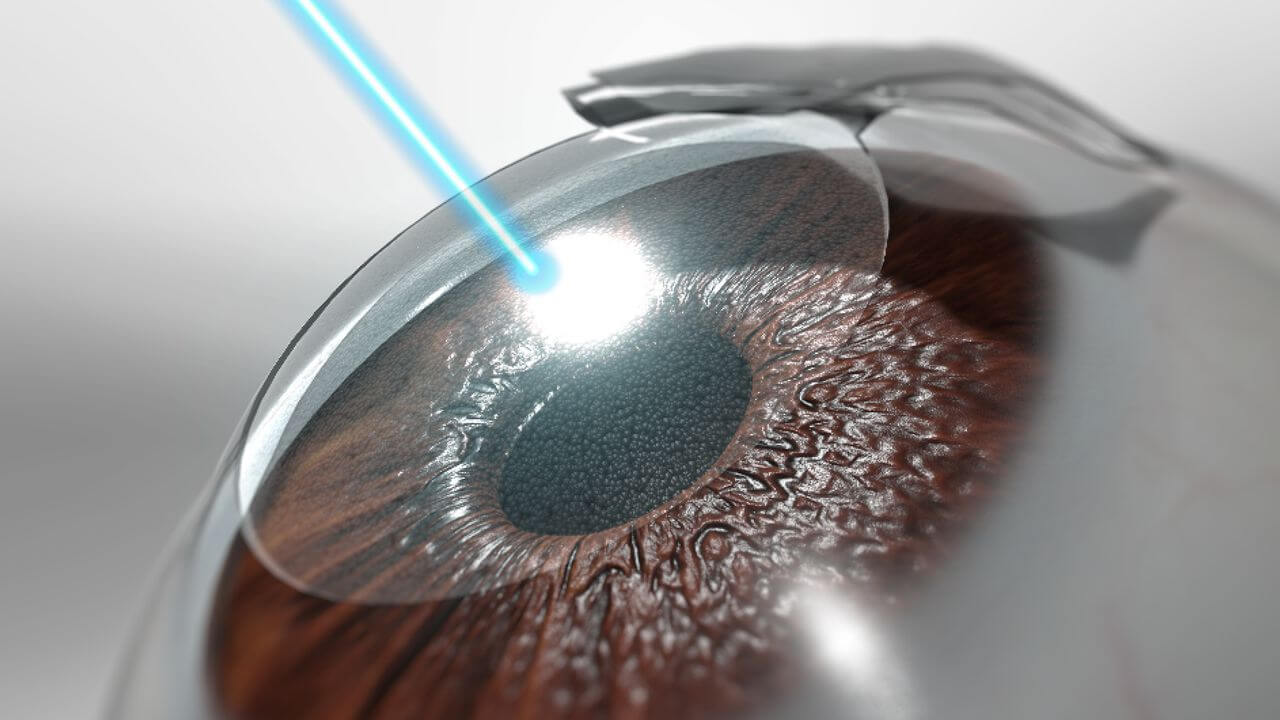What Is LASIK, And How Is It Performed?
LASIK surgery is used to treat blurry vision without relying on any external aids. Laser-assisted in situ keratomileuses, LASIK, corrects refractive errors and imperfections in the way the eye focuses incoming light. Ideally, the cornea and the lens work to focus light on the retina’s surface, but several kinds of refractive errors like myopia, hetromyopia and astigmatism impair this delicate system.
In people with myopia or short-sightedness, a steep cornea focuses light just short of the retina. Those with hetromyopia or far-sightedness have the opposite problem. Light is focused too far beyond the retina. And in people with astigmatism, the cornea has two different curvatures, which focus light at two distances and produce blurry vision.
Even those with perfect vision will eventually suffer from presbyopia, or ‘ageing eyes’. As the proteins in the lens age, they slowly increase their size. By an adult’s mid-’60s, the lens is too large to change shape and shift focus. Contact lenses and glasses bend light entering the eyes to compensate for these refractive disorders. But due to the advancement in technology and the introduction of LASIK, we can now alter the cornea’s shape, moving the focal point backwards, forwards, or pulling a divided image together. In corrective laser eye surgery like lasik, Smile eye surgery, doctors rely on excimer lasers.
How does LASIK work?
The first step in the surgery is to separate a thin layer from the front of the cornea. This is done with a wide flat blade or a femtosecond laser that produces millions of tiny plasma bubbles to create a plane beneath the corneal surface. Doctors then lift the flap to expose the inside of the cornea. Guided by the refractive error and the shape of the cornea, the laser sculpts the exposed corneal tissue into the correct shape. This process usually takes less than a minute for each eye. Finally, the flap is closed, and its edges release themselves just a few hours after the surgery.
Because the lasering is done on the eyeball itself, it is described as in situ or on-site. LASIK carves a patient’s contact lens prescription onto their cornea.
Also check – What Are Honey’s Characteristics and Advantages?
What Are The Benefits Of LASIK Surgery?
LASIK surgery early in life can create a lifetime of benefits and protect your vision in the long run. The most significant benefit of LASIK surgery is that it is a highly accurate procedure that can correct a wide range of refractive or focusing problems. It is a painless procedure that can be performed in a fraction of the time. LASIK recovery is very speedy, making it very beneficial for people with a working profile.
LASIK’s healing occurs within three hours of the surgeries, and vision recovery occurs overnight. LASIK is a great way that helps an individual to minimise or eliminate the use of glasses and contact lenses. People of any age above 18 years can opt for LASIK surgery after the pre-surgery evaluations. Opting for LASIK surgery provides visual freedom to an individual.
Does the Indian Air Force Allow Candidates With LASIK Surgery?
Candidates who have undergone LASIK surgery may be considered fit for commissioning. But there are some mandatory criteria that a candidate needs to satisfy before the selection. The candidate’s surgery must not have occurred before 20 years of their age. The surgery of the candidate should have been performed at least 12 months before their medical examination.
Also, the surgery should not have any kind of complications. The axial length of the eye must be equal to or less than 25 mm in the case of the Indian Navy and 25.5 mm in the case of the Indian Air Force as measured by army professionals. The post-surgery corneal thickness of an individual should not be less than 450 microns as measured by a pachymeter. One of the most crucial criteria for selection is that an individual’s refractive error before the surgery should not be greater than six dioptres.
This means one can still join defence forces after having a LASIK eye surgery if one fulfils the abovementioned criteria.
LASIK surgery is not allowed for NDA or any 10+2 entries.
Also check – Top Ayurvedic Treatment That Boosts Metabolism
What Are The Risks And Complications Of LASIK?
LASIK is among those procedures that save and improves the quality of life. It is estimated that more than 50,00,00 LASIK surgeries are performed each year around the globe. Most LASIK patients are satisfied with the results of their surgery. As with any surgery, however, there are some risks and complications involved. Therefore it is necessary to be fully informed before anyone decides to have LASIK surgery. According to the studies, the benefits outweigh the risks if LASIK is done correctly and on suitable patients.
LASIK, like any other surgery, is not for everyone. For this surgery to be safe and effective, doctors must carefully evaluate the patients. Some complications after the surgery are dry eyes, sensitivity to light, blurred vision and other symptoms such as glare, halos, starbursts and double vision.
These symptoms are commonly mild and temporary but can become severe and permanent, leading to loss of eyesight, interference with your usual activities and pain. These are just some of the risks associated with LASIK surgery. While talking to your eye doctor, discuss the risks and benefits of your case before the surgery. LASIK is a surgery, and it is recommended to get the facts before deciding if the procedure is right for them.
For How Much Time Will LASIK last?
There are many myths and false speculations around LASIK surgery that it lasts only for about 5-10 years. The cornea that is expected to be able to reshape will stay that way forever. If you’re an appropriate patient for LASIK, the surgery will last forever, except for cases where there are changes in the cornea. But if you are getting your pre-evaluation done correctly by a professional, you’ll definitely get surgery that will last for a lifetime without any risks or complications.



